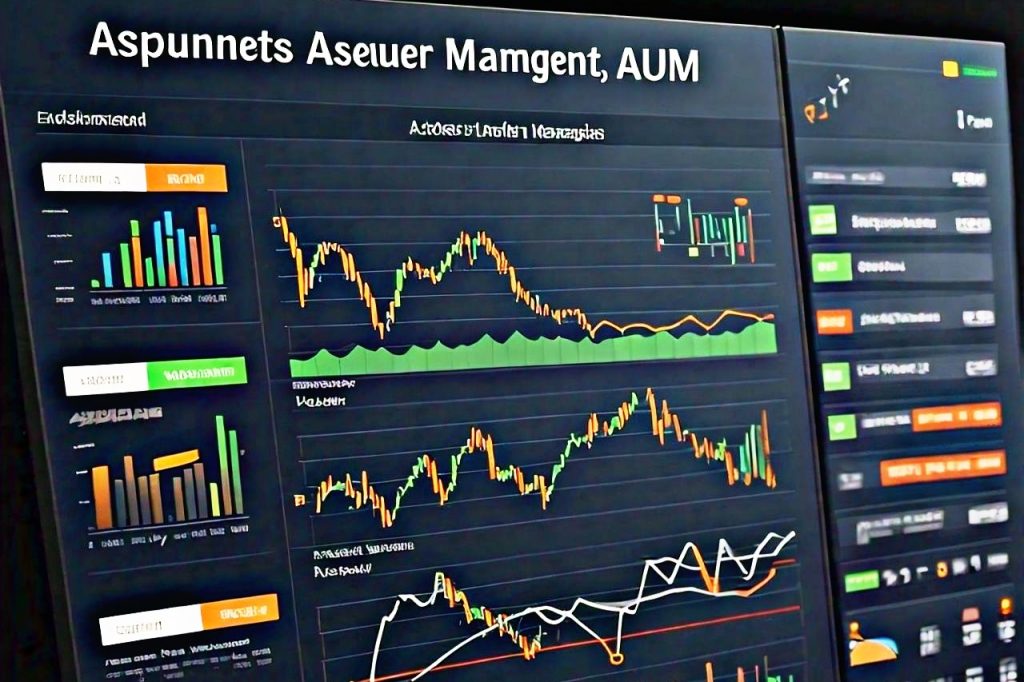Assets under management (AUM) is a term widely used in the financial industry, encompassing everything from individual investments to the portfolios managed by large institutions. It represents the total market value of all the financial assets managed by an individual, company, or fund on behalf of its clients. The concept is vital in understanding the scale, influence, and performance of financial managers and institutions.
In this article, we’ll delve deep into what assets under management (AUM) means, why it matters, how it is calculated, and its significance in various financial contexts. Whether you’re an investor, a financial professional, or simply someone keen on understanding the intricacies of wealth management, this exploration will provide valuable insights.
What Are Assets Under Management (AUM)?

At its core, assets under management (AUM) refers to the total market value of the investments managed by a financial entity, such as an asset management company, mutual fund, hedge fund, or wealth advisor. It includes a variety of asset classes like stocks, bonds, real estate, and alternative investments.
Key Components of AUM
- Client Investments: AUM includes funds directly invested by clients into portfolios managed by a financial entity.
- Proprietary Investments: In some cases, AUM may also include assets owned by the management company itself.
- Market Fluctuations: The value of AUM changes with market movements, as asset values rise or fall.
- New Inflows and Withdrawals: AUM increases with new client investments and decreases when funds are withdrawn.
Dynamic Nature of AUM
The value of assets under management (AUM) is not static. It evolves due to:
- Market performance, which directly impacts the valuation of investments.
- Changes in client contributions or redemptions.
- Shifts in portfolio strategy by the management entity.
Why Are Assets Under Management (AUM) Important?

The significance of assets under management (AUM) extends across various dimensions of the financial world.
1. Indicator of Firm Size and Stability
For asset management companies, mutual funds, and hedge funds, AUM serves as a barometer of their size and influence.
- Firms with higher AUM are often perceived as more stable and established, attracting more clients and investments.
- AUM can also reflect the level of trust and reputation a firm has built in the market.
2. Revenue Generation
AUM is directly linked to the revenue of financial firms, as management fees are often charged as a percentage of AUM.
- For example, if a firm charges a 1% management fee and manages $1 billion in assets, it earns $10 million annually from fees.
3. Client Decision-Making
Investors frequently consider a firm’s AUM when deciding where to entrust their funds. A higher AUM may indicate robust performance and effective management, although this is not always a guarantee.
4. Benchmark for Growth
Financial institutions and advisors use AUM to gauge their growth and success over time. Rising AUM signals effective client acquisition and portfolio management strategies.
How Are Assets Under Management (AUM) Calculated?

Calculating assets under management (AUM) involves summing up the market value of all assets managed by an entity. However, the methodology can vary based on the type of firm and the assets included.
1. Components of AUM Calculation
- Market Value of Assets: The current market price of stocks, bonds, real estate, and other investments.
- Cash and Cash Equivalents: Liquid funds held in the portfolio.
- Liabilities: Some calculations exclude liabilities, while others consider net assets (assets minus liabilities).
2. Factors Influencing AUM Calculations
- Market Volatility: Fluctuating asset prices directly impact AUM.
- Inclusions and Exclusions: Some firms may include leverage or proprietary investments, while others focus solely on client-managed assets.
- Currency Variations: For firms managing international assets, exchange rates can affect AUM figures.
3. Reporting Frequency
Firms typically report AUM figures on a quarterly or annual basis. These reports help clients and stakeholders track the performance and scale of the firm’s operations.
Types of Assets Under Management (AUM)
AUM can vary widely depending on the type of financial institution or service. Here are some common categories:
1. Mutual Funds
Mutual fund AUM represents the total investments pooled from individual and institutional investors, managed collectively to achieve specific financial goals.
2. Hedge Funds
In hedge funds, AUM often includes both client funds and any leverage used to amplify returns. Hedge fund AUM can fluctuate significantly due to market volatility and performance fees.
3. Private Wealth Management
Private wealth managers calculate AUM based on the individual portfolios they oversee for high-net-worth clients. This includes personal investments, retirement accounts, and trusts.
4. Institutional Asset Management
Large financial institutions manage AUM for corporations, governments, and pension funds. Institutional AUM can run into trillions of dollars, reflecting their extensive client base and diverse investment strategies.
Significance of AUM in Investment Strategies
The size of assets under management (AUM) can influence the investment strategies employed by a financial firm.
1. Large AUM
- Advantages: Firms with large AUM can access more resources, negotiate better deals, and diversify extensively.
- Challenges: Managing a vast portfolio requires sophisticated systems and can limit agility in rapidly shifting markets.
2. Small AUM
- Advantages: Smaller firms can be more flexible and take concentrated positions in high-potential investments.
- Challenges: Limited resources and market influence can constrain growth.
3. AUM and Risk Management
Effective risk management is crucial for firms with significant AUM, as large-scale losses can have far-reaching consequences for both clients and the institution.
Top Firms by Assets Under Management (AUM)

Several global institutions dominate the financial landscape with their staggering AUM figures.
1. BlackRock
As the world’s largest asset manager, BlackRock manages over $10 trillion in AUM, spanning mutual funds, ETFs, and institutional portfolios.
2. Vanguard Group
With AUM exceeding $7 trillion, Vanguard is renowned for its low-cost index funds and retirement solutions.
3. Fidelity Investments
Fidelity manages over $4 trillion in AUM, offering a wide range of investment and advisory services.
4. State Street Global Advisors
This firm manages over $4 trillion in AUM, primarily through its ETF offerings, including the popular SPDR funds.
Challenges Associated with AUM
While AUM is a critical metric, it is not without its limitations.
1. Not a Sole Indicator of Performance
High AUM does not necessarily mean better returns. Smaller firms or funds with lower AUM can sometimes outperform larger entities due to focused strategies.
2. Market Dependency
AUM figures can be heavily influenced by market conditions, which might not always reflect the firm’s management capabilities.
3. Client Perceptions
Clients may equate higher AUM with better reliability, which can lead to overconfidence in large firms while overlooking smaller, high-performing managers.
Future Trends in Assets Under Management (AUM)
The financial industry continues to evolve, and the concept of assets under management (AUM) is adapting to new trends:
1. ESG Investments
Environmental, Social, and Governance (ESG) investing is becoming a significant driver of AUM growth as more clients demand sustainable investment options.
2. Technology Integration
Advanced analytics and AI-driven strategies are helping firms optimize portfolio performance, impacting AUM growth positively.
3. Globalization
The increasing interconnectedness of global markets is enabling firms to attract international clients, further boosting AUM.
4. Rise of Passive Investing
The popularity of ETFs and index funds is driving significant AUM growth in passive investment strategies.
Conclusion: The Importance of Assets Under Management (AUM)
Assets under management (AUM) is more than just a financial metric; it is a reflection of a firm’s scale, expertise, and trustworthiness. From mutual funds to private wealth management, AUM plays a pivotal role in shaping investment strategies, driving revenue, and influencing client decisions.
While AUM is an essential indicator, it is not the sole determinant of a firm’s success. Investors should consider AUM alongside other factors, such as performance, risk management, and client satisfaction, to make informed decisions.
As the financial world continues to evolve, the role of assets under management (AUM) will remain central to understanding the dynamics of wealth creation and management. By appreciating its nuances, both investors and professionals can better navigate the complexities of modern finance.

